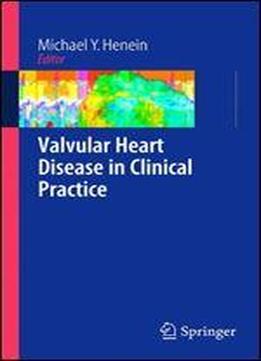
Valvular Heart Disease In Clinical Practice
by Michael Y. Henein /
2008 / English / PDF
61.6 MB Download
Over the last three decades, major advances in the management of diseases of the valves have been seen. While cardiac catheterization was in the 1970s, the only means for con?rming the diagnosis, Doppler echocardiography has become the corner stone for accurate assessment of valve disease, even in fetuses. Now not only the disease can be identi?ed but also the rate of disease progression (e. g. lea?et calci?cation and stiffness) can be accurately measured and quanti?ed by echocardiography and multislice/electron beam CT imaging. Surgical treatment of valve disease has also w- nessed great advances, having moved from traditional valve replacement to sophisticated repair procedures and the use of extracorporeal pump support in some patients. Robotic valve surgery has also proved a great success, in well selected cases, and is expected to have a fruitful future. Furthermore, in special circumstances, conventional surgical valve excision has now been replaced by percutaneous catheter-based valve replacement for aortic and pulmonary disease. This approach reduces the risk from the surgery itself, avoids general ana- thesia and many potential post-operative complications. This book discusses the practicalities of the diagnosis and treatment of the various aspects of common heart valve d- eases, covering most clinical and surgical issues. It is designed to assist clinicians in the management of patients with valve disease and provide them with answers to many of the clinical questions that arise.











